I am a senior product designer at Amazon, working on the retail side of Amazon devices. In my work I lead the core shopping experience for devices, helping customers discover, choose, purchase and use Amazon devices.
In early 2020, my team and I had this crazy idea. Imagine, we said, if we could get customers to weigh in on which devices Amazon will build next. The idea was that we'd show customers a few carefully thought out concepts we're thinking about, and they'd let us know which concepts they want us to make a reality. I was thrilled when I was asked to be the lead designer on this project.
The Challenge
The challenge that I faced was, that the seamless purchase flow that Amazon is so well known for, could not work for products that are not yet built.
The other challenge is that my team and I typically work in our energetic Amazon offices, but in this year of the pandemic, this project was done at home, with kids running around.
Going into this project I asked myself, how does this purchase process differ from the traditional Amazon experience we all know? And what do people need to feel confident in making this unusual purchasing decision?
When we put our heads together over the video chat we flushed out 3 main challenges to this new process of “purchase”.
1) Instead of purchasing a product, customers would pre-order a concept.
2) Instead of receiving the product in 2 days, customers would have to wait 4-7 months.
3) Instead of getting an item that will surely be theirs, customers would bet on an item to help get it built.
The challenge became even more complex because for the MVP, we got direction from our VP not to touch the code of the checkout flow, or even Search. That meant that even though this is such an unusual purchase, we could not change any of the messaging in cart, or checkout. Customers had to fully understand what they’re getting into BEFORE they hit the Add to Cart button.
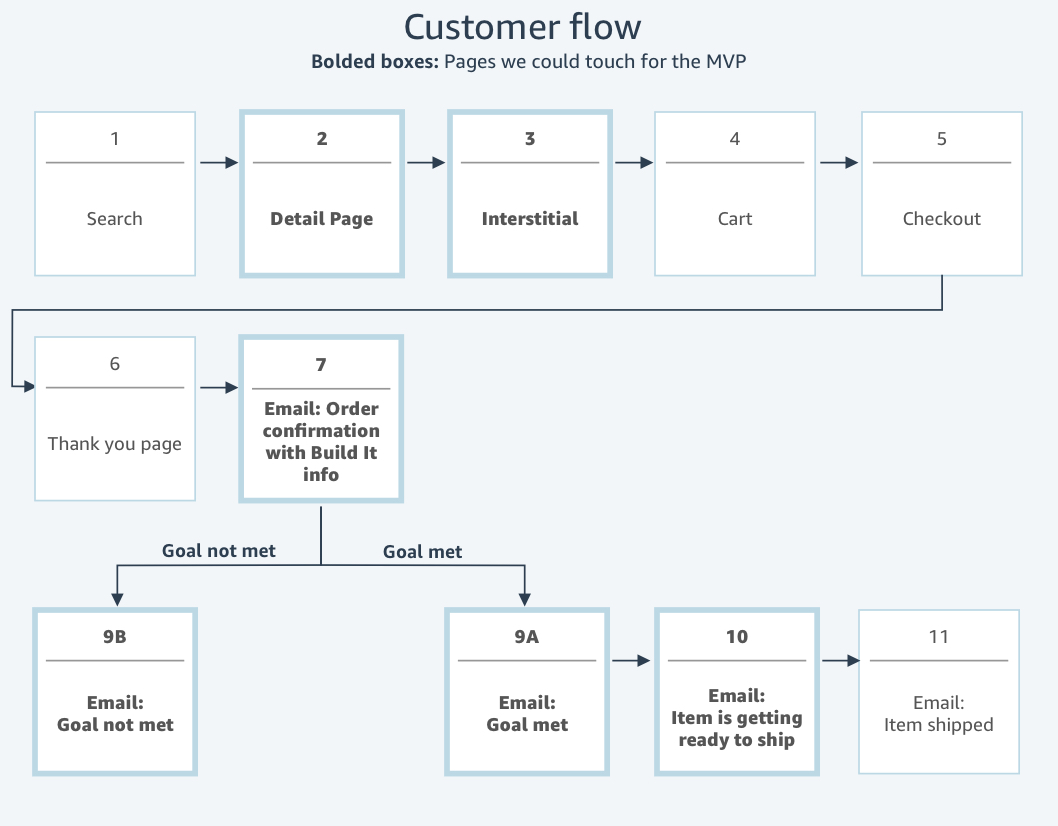

Focusing on the Product Page
So, I focused on the detail page to get the message across. There were many key changes that had to happen, but let me show you the 2 most critical elements that have influenced the function, the satisfaction with the new “creation process”, and that make these products different from any other products on Amazon: The Progress Bar, and the Interstitial.
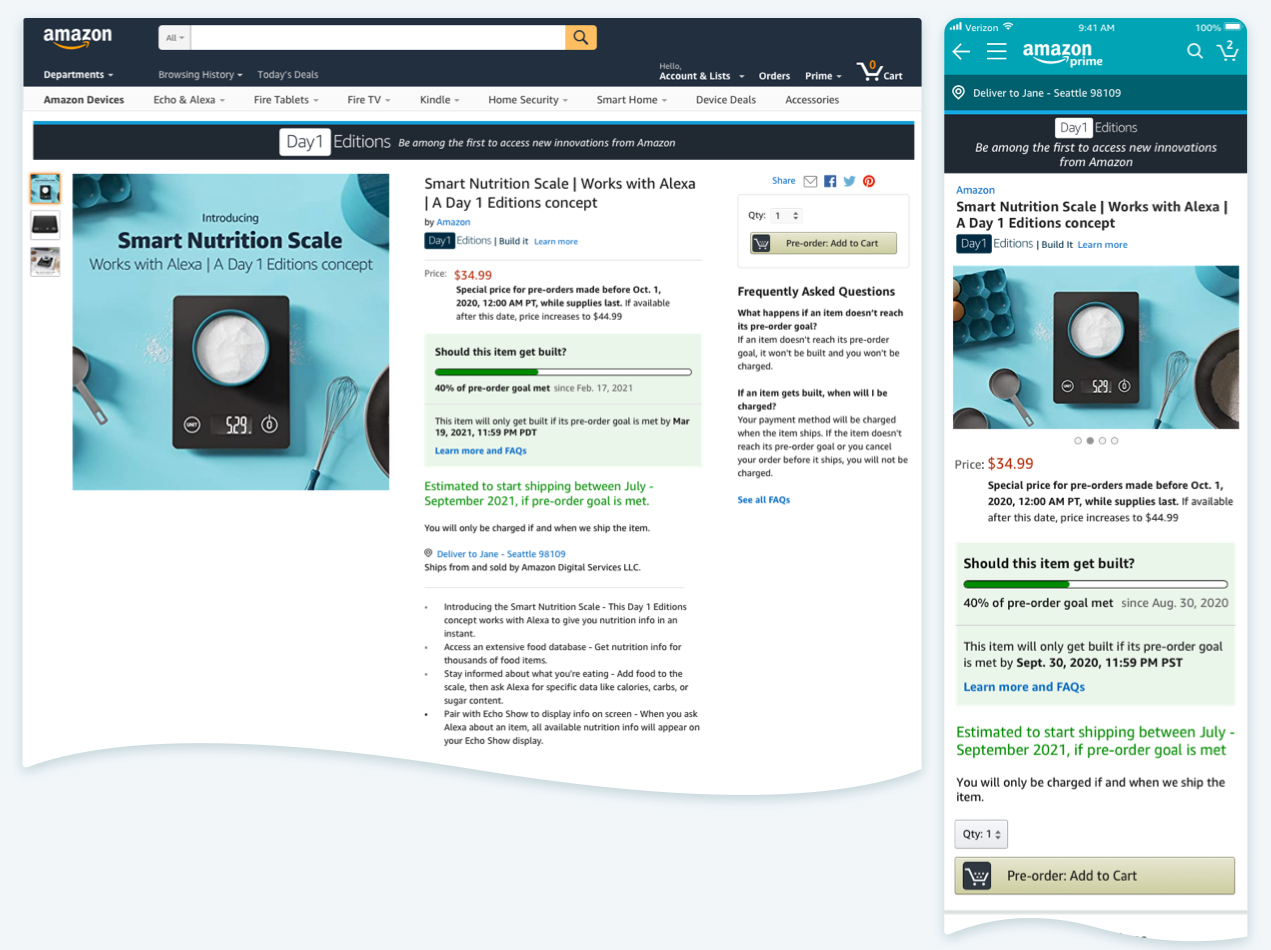

The Progress Bar

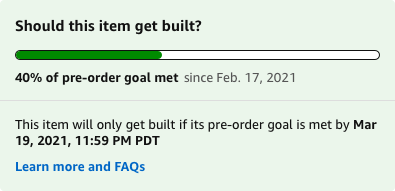
The first, is the progress bar with the title “Should this item get built?” It is here because I wanted it to be crystal clear to customers that this product is just a concept, not even built yet. And right below, customers can visually see the incremental progress to the goal. I tested this box over and over, tweaking it numerous times to get it right. The language was changed several times, the placement of the percentage, and the color of the progress bar was tweaked endlessly. Then, well into the process, when I first heard, in one of the usability recordings, a participant saying this is just like a Kickstarter for Amazon, I knew we did something right!
The Interstitial
But, there was another problem. Imagine yourself coming in and seeing this cool smart gadget, and thinking - “I want it right now”. And you buy it, out of impulse, without reading anything else that’s on the page. You click the pre-order button and boom, you're on your way to make a purchase. Well, that could be disastrous, because (1) – you’re not going to get charged when you might think which is going to be weird, and (2) you aren’t going to get your product in two days like anything else on Amazon, you’ll get in in 4-7 months, if at all! Just imagine the kind of confusion and problems that can create!
So the second element I put in was this blocker that shows up once a customer clicks the Add to Cart button. It contains all the important information about how the program works. This blocker does something that goes against everything that Amazon shopping experience stands for, as was even commented to me by one of the senior executives. This blocker slows down the shopping process. However, in this case, as I have described to the aforementioned executive, the blocker enriches the experience, because it prevents hundreds of hours spent on customer care calls, or frustrated customers who think they are not getting their product on time, which can eventually lower our credibility as a company.

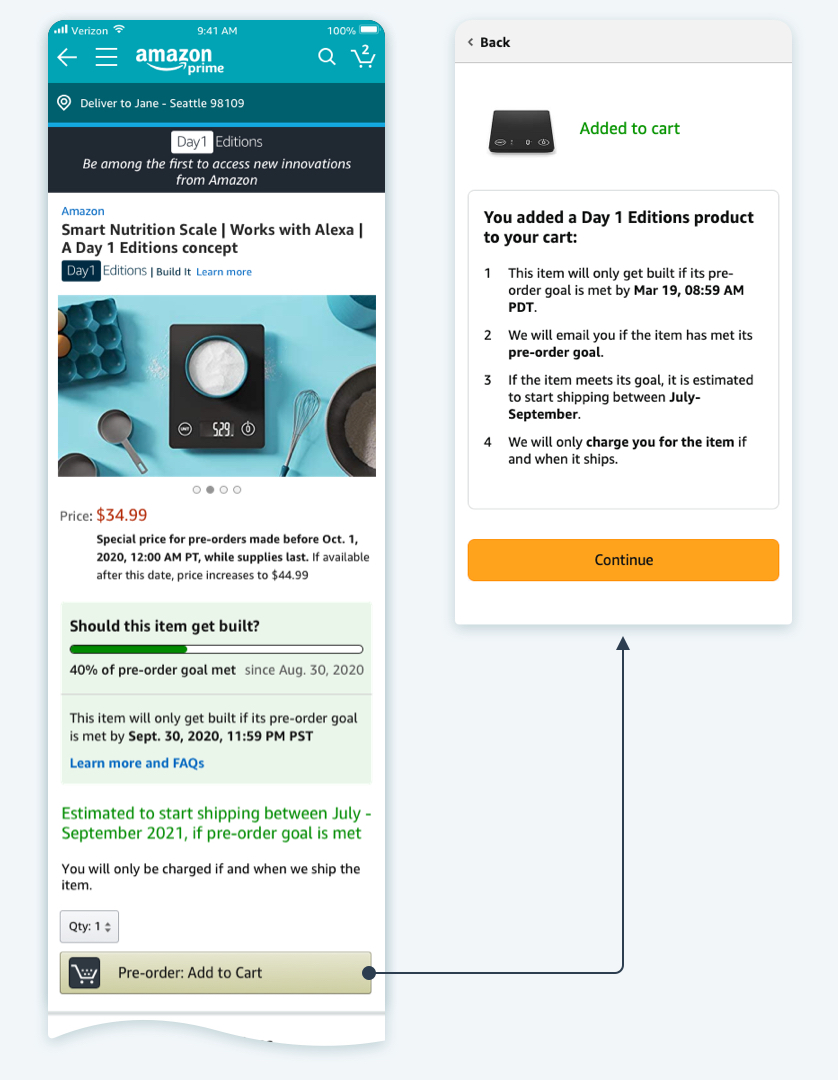
We launched an MVP with 3 products
The rest of the purchase flow is exactly the same as for any other pre-order on Amazon. Because remember, we couldn’t touch the checkout flow. But, because of the elements mentioned above on the detail page, in our usability studies customers were not confused by the standard experience.
We called this program Build It! The first ever experiment within Amazon devices that truly brings the user into the design process, letting customers weigh in on which products we build next.
On February 16, 2021 we launched it with 3 very cool products: A smart cuckoo clock, a smart nutrition scale, and a smart sticky note printer.

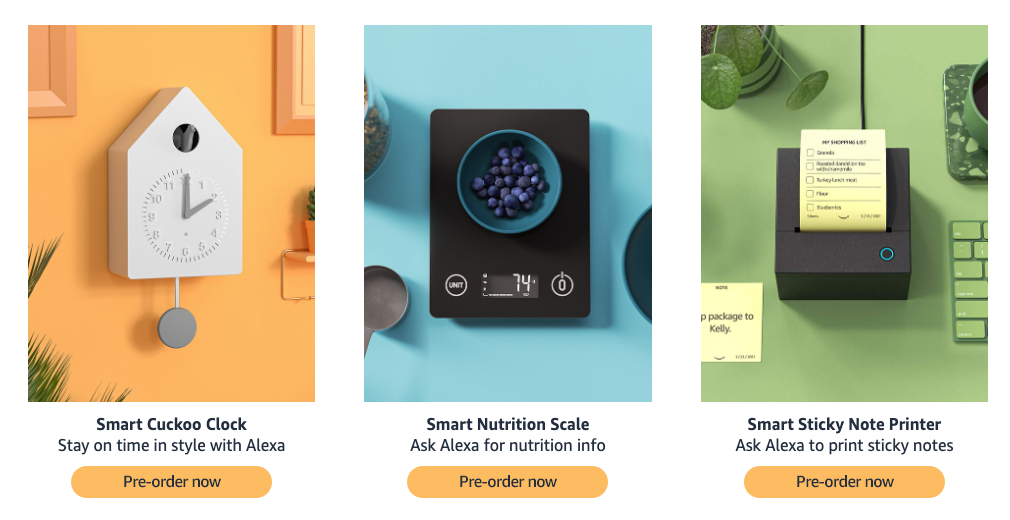
Only one of them, the sticky note printer, reached it’s pre-order goal, and it did so at a surprising speed, on day 3 of 30! The other two, the cuckoo clock and the smart nutrition scale, will never get built, because they didn’t reach their goals.
It was incredibly gratifying to see that we met our success metrics for the MVP, which was gaining full customer support to make at least one concept a real product. After that, we held post-launch usability studies, and found out that people not only fully understood the program and were engaged in it, but the questions that were asked most frequently by participants, were: “What is the future of Build It?”, “How do I follow the program”, and “How do I sign up to be alerted when new concepts get created?”
We are now working on Wave 2 of Build It with cool new concept ideas. The other great outcome is that now other teams at Amazon outside of devices are interested in using the program to engage with their customers. But the biggest satisfaction for me, is seeing that we can truly engage and connect with our customers in a way that is meaningful to them and shows that their voice matters.
Read more about the success of the launch from The Verge.
Live Demo
As we've been primarily working from home during this time, our leadership looked for ways to share work across the organization. To solve this, our teams were asked to create short (less than 2 minutes) “invention demo” videos, to be shared in Town Halls and other Leadership Summits. Here is the demo I made about Build It.


